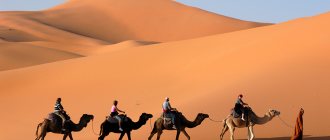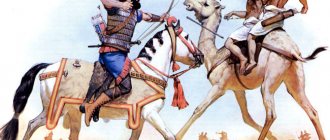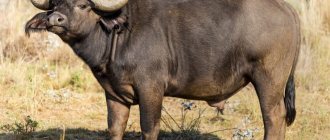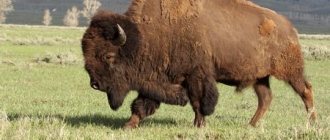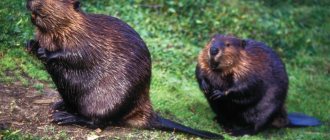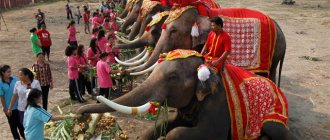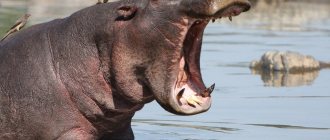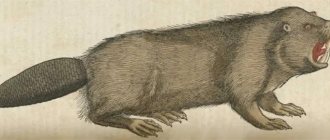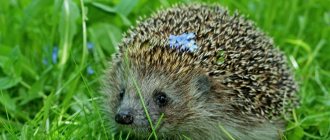The camel, which has the poetic name “ship of the desert,” is one of the most amazing creatures in nature. Not so much because it can easily go without water for a long time, but because of its wonderful ability to cope with the most difficult conditions. Moreover, it is able to fight not only with the heat of the desert, but also with very low temperatures in other habitats.
Features of camels
The habitat of this wonderful animal for the most part represents the most unfavorable arid regions of the planet - from deserts to steppes. This creature of nature is perfectly adapted to being in such conditions for a long time - a camel can be without food and water for a very long time.
Thus, a camel can be without water for a week, and without food for two whole weeks. A camel needs such endurance in order to be able to make long transitions between sources of life-giving moisture. At the same time, a camel is able to feed only on its own savings and reserves in the body. Although, by the end of a long and tiring journey, the camel’s humps will lose their elasticity and volume, and the camel itself will significantly lose weight and become thinner.
Lifestyle and nutrition
Camels are herd animals. They live in groups of 5 to 20 (sometimes up to 30) heads, in which for several females with offspring there is one male leading the herd. Often young males also join the herd, but during the breeding season they leave the group.
Wild camels in nature roam from one place to another. They mainly inhabit rocky, desert places, on the plains and in the foothills, with sparse and rough vegetation and rare sources of water. Camels are ruminants. They feed on saltwort, wormwood, camel thorn and saxaul.
Despite the fact that camels can go without water for up to two weeks, it is vital for them. Large groups of camels accumulate after rains on the banks of rivers or at the foot of mountains, where temporary floods form. In winter, camels can quench their thirst with snow, and in the absence of fresh water, they can drink salty water.
Adaptations that allow a camel to survive
The main specific adaptation by which a camel can be distinguished from all other animals, and which gives it the opportunity to survive in the desert, is humps made of fatty deposits. These deposits represent a kind of “roof”, which, first of all, performs a protective function, covering the animal’s back from the rays of the sun. In addition, such a concentration of fat deposits in one place helps to increase the level of heat transfer.
Contrary to the popular belief in the past that water is stored in camel humps, in fact animals store fat in them, thanks to which they receive a sufficient amount of moisture at the right time, turning it into water. The humps represent a kind of insulating material, serving as a certain thermostat that ensures the organization of the necessary heat exchange. Those. humps represent a supply of food and moisture in case of critical need.
For example, baby camels do not yet have such adaptations - since fat begins to be deposited only at the moment of transition to solid food.
Why is there fat in the humps?
Why does all the fat accumulate exclusively in the humps, and not be stored evenly throughout the body? Everything is simpler than one might expect: in addition to its nutritional and moisture-forming functions, fat acts as an insulating material, preventing heat loss, and the humps act as a kind of natural roof, thus protecting the camel from the scorching rays of the sun.
Interesting: Why do camels spit? Description, reasons, photos and videos
So it turns out that the camel is a unique animal, created exclusively for working in the desert. And don’t be surprised if you see this creation of nature with drooping humps. The camel is not old, it is just tired.
How do camels satisfy their need for water?
How can camels survive for so long without water in such hot conditions? In fact, camels generate water from the fat they accumulate in their humps through oxidation processes. Thus, from one hundred grams of fat during oxidation, the animal receives more than 107 grams of pure moisture.
Although this information logically leads to the question: why are camels the only animals that have fat reserves that can handle fat so freely? In fact, everything is simple: in order to be able to oxidize fat reserves, animals must have a large supply of oxygen - and, therefore, breathe intensely.
Each breath loads dry and hot air into the lungs, which leaves the body enriched with moisture. And the camel, in addition to all other devices, has one more thing: the moisture released from the animal’s nostrils is accumulated in a special fold - and gets back without problems, thus increasing the amount of precious liquid.
Another property of this truly unique animal also helps reduce the amount of lost moisture by reducing losses through sweating. The fact is that the camel has one significant difference from most other mammals - it is able to change its body temperature, focusing on indicators of the external environment. For example, it easily varies from 35 to 40 degrees - whereas other animals habitually maintain a constant temperature.
Camels
Camel cubs are not born so small. They weigh approximately 35 kg, and their height sometimes reaches 90 cm. Camel cubs are no less hardy than their parents. Within 2 hours the baby can run after his mother. By the way, camels feed their children milk. This is why the camel is classified as a mammal.
Camels live in hot countries where deserts and semi-deserts predominate. But this strange animal is loved all over the world. In many fairy tales and poems you can find such a funny character as a baby camel.
Camel capabilities
A camel is capable of drinking more than two hundred liters of water at a time, and at a terrifying speed - in just 20 minutes. And these animals are not at all picky in their choice of moisture - even salt water is suitable for them.
True, some scientists claim that the preserved moisture is evenly preserved in the tissues of the animal’s body. However, if this were the case, then the camel would have very low salt levels - which it does not.
It is worth noting that camels are practically not susceptible to dehydration. At a time when most animals die from dehydration, having lost only 20% of their total body weight in the form of water, the camel will remain alive without any special consequences, having lost up to 40%.
Their unique body is designed in such a way that camels are not only unable to sweat, but do not even exhale moisture - a special nasal fold prevents this, returning water back to the body. They don't even excrete moisture naturally through excrement.
But in any case, a camel, like any animal, after a long, difficult period of starvation and drought will need rest and recovery.
Camel - description, characteristics, structure
A camel is an animal that is quite large in size: the average height at the withers of an adult is about 210-230 cm, and the weight of a camel reaches 300-700 kg. Particularly large individuals weigh more than a ton. The body length is 250-360 cm for two-humped camels, 230-340 cm for one-humped camels. Males are always larger than females.
The anatomy and physiology of these mammals are a clear indication of their adaptability to life in harsh and arid conditions. The camel has a strong, dense build, a long U-shaped curved neck and a rather narrow, elongated skull. The animal's ears are small and round, sometimes almost completely buried in thick fur.
The large eyes of a camel are reliably protected from sand, sun and wind by thick, long eyelashes. The nictitating membrane, the third eyelid, protects the animal's eyes from sand and wind.
The nostrils are shaped like narrow slits that can close tightly, preventing moisture loss and protecting during sandstorms.
Taken from the site: ephemeralimpressions.blogspot.ru
A camel has 34 teeth in its mouth. The animals' lips are rough and fleshy, adapted for tearing off thorny and tough vegetation.
The upper lip is forked.
Photo credits: Klaus Rassinger, Gerhard Cammerer
Large calluses are located on the chest, wrists, elbows and knees of domestic animals, allowing the mammal to painlessly lower itself and lie on the hot ground. Wild individuals do not have calluses on their elbows and knees.
Each camel's leg ends in a cloven foot with a kind of claw located on a calloused pad. Two-toed feet are ideal for walking on rocky and sandy terrain.
Photo by: 3268zauber
The camel's tail is quite short in relation to the body and is about 50-58 cm.
At the end of the tail grows a tassel formed by a tuft of long hair.
Photo by: Ltshears
Camels have a thick and dense coat that prevents moisture from evaporating in hot weather and provides warmth on cold nights. The camel's fur is slightly curly, and its color can be very diverse: from light to dark brown and almost black.
On the back of the animals’ heads there are paired glands that secrete a special odorous secretion, with which camels mark their territory by bending their necks and wiping themselves on stones and soil.
Photo by: Kuribo
Contrary to popular belief, a camel's hump contains fat, not water. For example, the hump of a Bactrian camel contains up to 150 kg of fat. The hump protects the animal's back from overheating and is a reservoir for energy reserves. There are 2 closely related species of camels: one-humped and two-humped, having, respectively, 1 or 2 humps, laid down by evolutionary development, as well as some differences associated with living conditions.
Camels retain fluid in the scar tissue of the stomach, so they can easily tolerate long-term dehydration. The structure of camels' blood cells is such that during prolonged dehydration, when another mammal would have died long ago, their blood does not thicken. Camels can survive without water for a couple of weeks, and without food they can live for about a month. The red blood cells of these animals are not round, but oval in shape, which is a rare exception among mammals. Without access to water for a long time, a camel can lose up to 40% of its weight. If an animal loses 100 kg in a week, then after receiving water it will quench its thirst within 10 minutes. In total, the camel will drink more than 100 liters of water at a time and make up for the lost 100 kg of weight, recovering literally before our eyes.
Photo by: Trachemys
All camels have excellent eyesight: they are able to spot a person a kilometer away, and a moving car 3-5 km away. Animals have a well-developed sense of smell: they sense a source of water at a distance of 40-60 km, easily anticipate the approach of a thunderstorm and go to where the showers will occur.
Despite the fact that the majority of these mammals have never seen large bodies of water, camels can swim well, tilting their bodies slightly to the side. A camel runs at an amble, and the speed of a camel can reach 23.5 km/h. Some individuals of wild haptagai are capable of accelerating up to 65 km/h.
The voice of a camel is like the braying of a donkey. Animals especially often vocalize when they stand up with a load.
Camel fat and its abilities
The fat that a camel collects in its hump is not only a food and water reserve. Since the humps - the fat layer - are located on the back of the animal, which is all exposed to the rays of the desert sun, this fat is able to protect the animal both from overheating and from the influence of solar radiation.
The hump can also play the role of a kind of temperature regulator - during the night (quite cold in the desert) it can cool down to 34 degrees, while providing the camel with coolness in the morning.
In addition to all of the above, the camel has the ability to carry huge loads (up to 400 kg) on itself and its unique hump, for which it received the name “ship of the desert.”
Moreover, the animal travels up to 40 kilometers a day through unimaginable desert conditions.
For all their abilities, camels have served humanity for many thousands of years - and their significance among many Asian peoples still remains important.
Why does a camel have a hump on its back?
After reading this article, few people will have this question, because we already understand that the hump serves as a source of food for camels. But if you think about it, many animals have fat, distributed throughout the body, and only camels store it in their hump. Why? As you know, nature never does anything for nothing, and camel’s hump actually has several other beneficial properties. Since the sun predominantly shines from above, the camel's hump serves as a shield, protecting the animal from solar radiation. In addition, since fat betrays heat much worse than water, the hump prevents the body from heating up in direct sunlight. The blood is also protected from heat: due to the fact that fat cells do not need oxygen, the blood vessels pass below the hump, in an area of relative coolness. Among other things, some species of camels have thicker hair on their backs, while the hair on all other parts of the body is much thinner. This body structure helps repel heat from direct sunlight above and cool the camel below.[8]
You can find out how many days a camel can live without water, as well as many other interesting facts about these animals, from our article in the “Interesting Facts” section.
Tags: Camels Animals Desert
Austerity
Of course, no matter how much water entered the animal’s body, it could not have been enough for three weeks of Prohibition. But the camel’s body immediately begins a regime of strict economy.
We list only the most effective measures taken.
- camels don't sweat;
- breathing slows down;
- the excretory system also participates in economy - the liquid that must be released is filtered by the kidneys several times;
- Animal droppings do not contain an ounce of moisture and are excellent fuel for fires.
The camel is an invaluable animal, whose role in the development of Middle Eastern civilizations is difficult to overestimate. It is unknown how they would have developed without such an assistant.
Why is a camel called the ship of the desert?
After all, there is no water in deserts and ships have no business doing that. Yes, because the sandy mountains - dunes - are very reminiscent of frozen sea waves. So camel-ships have been plying this sandy sea for many hundreds of years.
Nature has created many unusual animals, one of which can safely be called the camel, because only it has a hump on its back, and some species even have a pair of humps.
The camel is incredibly hardy and is able to tirelessly carry half a ton of weight over long distances. In addition to the ability to go many days without drinking, the ship of the desert easily copes with the heat, winds and other harsh features of the world of sands and dunes. But not everyone knows why this animal needs humps.. Do you know?
